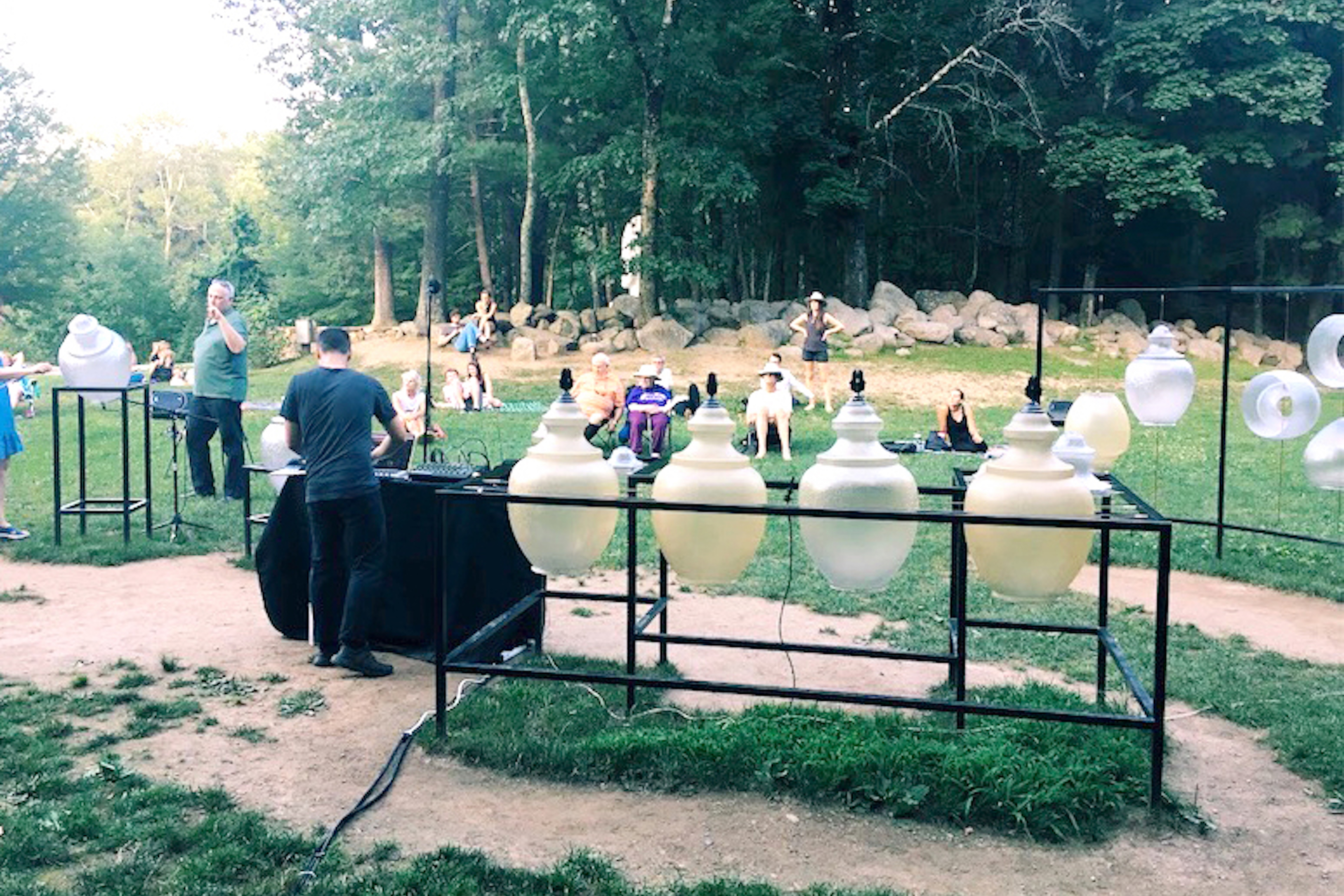



Commissioned by the deCordova Sculpture Park & Museum, the performance used live electronic, recorded, and ambient environmental sound to transform and enhance the acoustic quality of the site.
The project was guided by questions such as: How has GPS has altered our sense of direction? What might it feel like to engage with a site using echolocation? What if audio moved within a field based on my movements and GPS location? How can I use Andy Graydon’s City Light Orchestra as an amplified sculpture to invite audience participation?
“Eshu focuses on sites of contingency, places where people might bump into something unpredictable…Contained by neither heavenly or earthly rules, Eshu stands between two worlds, or between two of anything trying to communicate, not like some high-fidelity sender-receiver, but more like the atmosphere itself, shifting, cloudy, full of static and the smoke of human fires. This may seem like a problem when human beings are desperate for higher meaning, but it is actually a blessing.”
“To consider earth holy is to connect the lowest and most material the most high and ethereal, to close the breach between matter and spirit. It subversively suggests that the whole world might potentially be holy, and that the sacred can be underfoot rather than above”
—Lewis Hyde, 1998
“To consider earth holy is to connect the lowest and most material the most high and ethereal, to close the breach between matter and spirit. It subversively suggests that the whole world might potentially be holy, and that the sacred can be underfoot rather than above”
—Rebecca Solnit, 2000